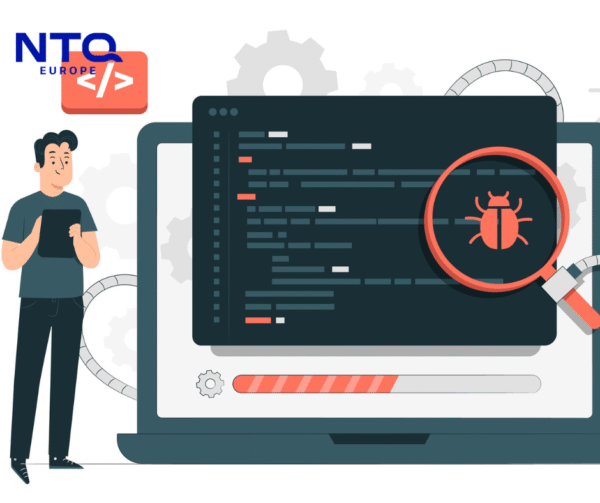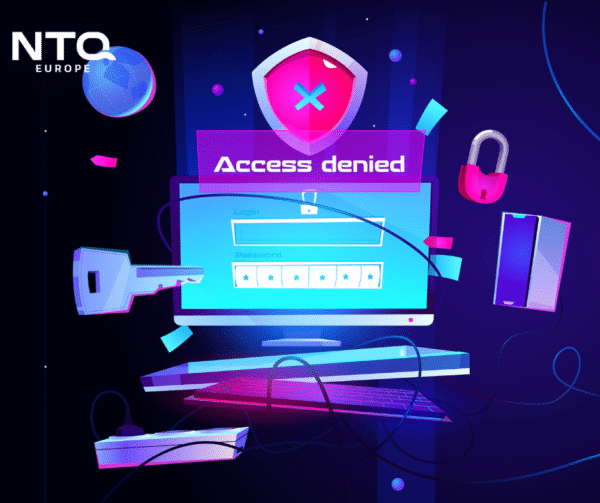1. Understanding Penetration Testing
What is Penetration Testing?
Penetration testing, often referred to as a penetration test, is a simulated cyberattack performed by ethical hackers (also known as white-hat hackers) to identify and exploit vulnerabilities in a system, application, or network. The goal of this test is not just to find weaknesses, but to understand how far an attacker could go if they tried to break in and what damage they could do. In the real world, it’s like hiring someone to break into your house to show you where the locks are weak, so you can fix them before a real thief shows up.
This process mimics real-world attack techniques and gives your team actionable insights, as well as how it could be exploited and how to fix it. That’s what makes penetration testing services such a valuable part of any serious cybersecurity strategy.

Penetration testing is a simulated cyberattack performed by ethical hackers to identify and exploit vulnerabilities in a system, application, or network.
The Importance of Penetration Testing in Software Security
With the increasing sophistication of cyber threats, penetration testing can help businesses by offering:
- Proactive Risk Identification: Detects vulnerabilities before attackers do.
- Compliance Assurance: Meets regulatory requirements like ISO 27001 and PCI DSS.
- Enhanced Security Posture: Strengthens defenses against real-world attacks.
Penetration Testing vs. Vulnerability Assessment
Many people confuse penetration testing with vulnerability assessment, but while both are important, they serve different purposes.
| Aspect |
Penetration Testing |
Vulnerability Assessment |
| Purpose |
Simulate real-world attacks to exploit vulnerabilities and assess actual risk |
Identify known vulnerabilities in systems and provide a general security overview |
| Method |
Manual testing combined with tools; mimics attacker behavior |
Automated scanning tools with minimal manual interaction |
| Depth of Insight |
Deep and detailed – shows how a hacker could move through your system and cause damage |
Broad – identifies weak spots but doesn’t test how they could be exploited |
| Reporting Output |
Actionable steps with proof-of-concept attacks, prioritization, and business impact |
Technical list of vulnerabilities with basic remediation suggestions |
| Expertise Required |
High – conducted by certified ethical hackers |
Moderate – can be handled by internal teams or with minimal outside help |
| Frequency |
Performed periodically or during major changes/releases |
Often run regularly as part of routine security hygiene |
| Best For |
Simulating attack scenarios, validating your security controls |
Maintaining visibility into known vulnerabilities over time |
Exploring the Types of Penetration Testing
Penetration testing isn’t one-size-fits-all. Depending on the goals, systems, and risk profile of your business, different testing types are used to simulate different attack scenarios. Here are the most common types of penetration testing and what each one is designed to achieve:
Black Box Penetration Testing
In black box testing, the ethical hacker has no prior knowledge of the system being tested, just like an external attacker would. The tester gathers information from scratch, scans for weaknesses, and attempts to exploit them using the same techniques a real threat actor might use. This method is useful for simulating real-world, outsider attacks to assess how well your perimeter defenses hold up under pressure.
White Box Penetration Testing
White box testing (also called clear box testing) provides the tester with full access to internal data such as architecture diagrams, source code, and system credentials. This deep level of insight allows for a thorough evaluation of code-level vulnerabilities, misconfigurations, and security flaws across the application or network. It’s particularly valuable for businesses looking to harden internal systems and validate secure development practices.
Gray Box Penetration Testing
Gray box testing is a hybrid approach where the tester has limited internal knowledge, such as user credentials or access to certain documentation. This simulates a scenario where an attacker may have some insider access (e.g., a contractor or a compromised employee account), helping uncover privilege escalation risks, insecure workflows, and overlooked logic flaws, thereby providing a balance between realism and test depth.
Web Application Penetration Testing
This test focuses on identifying vulnerabilities in web-based platforms like e-commerce sites, portals, and SaaS applications. Testers look for threats like SQL injection, cross-site scripting (XSS), authentication bypass, and more, ensuring customer data and business logic aren’t at risk.
Network Penetration Testing
Network penetration testing targets your internal and external infrastructure, including servers, routers, firewalls, and switches with the goal being to identify open ports, weak credentials, outdated software, and misconfigurations that could lead to unauthorized access. Both internal and external network tests simulate how attackers might move laterally through your systems after breaching your defenses.
Depending on the goals, systems, and risk profile of your business, different testing types are used to simulate different attack scenarios.
Mobile Application Penetration Testing
With mobile apps often storing sensitive data and connecting to back-end servers, security is a top priority. This test assesses both Android and iOS apps for vulnerabilities like insecure data storage, broken authentication, or insufficient encryption and includes checks against mobile-specific threats such as code tampering or rooted device exploitation.
IoT Penetration Testing
IoT testing is designed for connected devices such as smart sensors, wearables, home assistants, or industrial equipment. Testers examine firmware, hardware interfaces, communication protocols, and back-end APIs to detect weaknesses, securing your entire digital ecosystem, especially when these devices interact with your core business systems.
2. The Penetration Testing Process
A successful penetration test is about following a structured, ethical process to uncover, analyze, and resolve security weaknesses without harming your business systems.
Step 1: Information Gathering & Planning
This is the foundation of every penetration test. In this phase, the tester collects as much data as possible about the target system, such as domain names, public IPs, open ports, technologies used, and employee details (where applicable). The goal is to map out the attack surface and define clear objectives, scope, and rules of engagement.
Proper planning prevents legal issues, ensures the testing team avoids critical systems that could cause downtime, and aligns testing with the organization’s risk appetite. Without a clear scope, a pen test could either miss key areas or accidentally cause service interruptions.
Step 2: Vulnerability Scanning & Exploitation
Once the groundwork is done, the testing team begins scanning the system using both automated tools and manual techniques, searching for known vulnerabilities, weak configurations, unpatched software, or insecure protocols. The team then attempts to exploit these vulnerabilities safely and ethically to understand the potential damage which an attacker could cause.
A successful penetration test is about following a structured, ethical process to uncover, analyze, and resolve security weaknesses without harming your business systems.
Step 3: Analysis & Security Reporting
After the testing is complete, the penetration testers compile a detailed report outlining every vulnerability found, how it was exploited, the impact on your systems, and how easily it could be repeated by malicious actors. The report is typically broken down by severity level (e.g., critical, high, medium, low) and includes both technical details for engineers and executive summaries for leadership.
A penetration test is only valuable if its results lead to action. A clear, prioritized report empowers IT teams to patch critical gaps quickly, and helps stakeholders understand the business risk behind each technical flaw.
Step 4: Remediation & Retesting
Following the delivery of the report, your internal team (or a trusted partner) works on fixing the identified vulnerabilities. Once those fixes are in place, the penetration testers return to verify that the weaknesses have been properly addressed – often referred to as a retest or verification phase.
Security is an ongoing process. Retesting ensures that critical vulnerabilities have been resolved effectively and no new issues were introduced during the fix. It also provides closure to the engagement and boosts confidence in your organization’s security posture.
3. Most Common Challenges in Penetration Testing
While penetration testing is a powerful tool in your cybersecurity toolkit, executing it properly isn’t always straightforward. Many businesses encounter challenges that can impact test effectiveness or even expose them to unnecessary risks if not managed well. Below are three of the most common challenges and the practical ways to handle them.
| Challenge |
Why It Matters |
How to Solve It |
| Defining the Right Scope |
Without clear objectives, testing may miss critical assets or go too broad, wasting time and resources. An undefined scope also increases the risk of system disruption or legal violations. |
Collaborate with stakeholders to identify business-critical systems, compliance goals, and acceptable boundaries. Define clear objectives, success metrics, and a list of excluded systems to guide ethical hackers effectively. |
| Avoiding System Downtime During Testing |
Penetration testing simulates real-world attacks, which can inadvertently disrupt services, corrupt data, or affect user access, especially in production environments. |
Use a controlled test environment or run tests during low-traffic hours. Always backup critical data, monitor system performance during testing, and communicate test timelines to all relevant teams in advance. |
| Keeping Up with Emerging Threats |
New vulnerabilities appear constantly, and outdated testing methods may overlook modern attack vectors like cloud misconfigurations, zero-days, or API vulnerabilities. |
Partner with penetration testing providers that stay up to date with the latest threat intelligence and use a mix of manual techniques and advanced tools. Conduct tests regularly, not just once a year. |

Penetration testing plays a critical role in safeguarding your business in the digital age
4. The Role of Penetration Testing in Cybersecurity
Identify and Fix Security Vulnerabilities Before They’re Exploited
Penetration testing simulates real-world cyberattacks to uncover hidden weaknesses in your applications, networks, and infrastructure. Unlike automated scans, it shows how an attacker might actually exploit those weaknesses and what the real damage could be. This allows your team to fix the most critical gaps before they turn into costly breaches.
Support Compliance with Global Security Standards
Whether you’re working toward ISO 27001, PCI DSS, or GDPR compliance, penetration testing is often a required or strongly recommended control. It provides documented proof that your systems have been tested, your controls are working, and that you’re actively minimizing risk. It’s not just about passing audits; it’s about showing clients and regulators that you take data protection seriously.
Strengthen Your Defense Against Real-World Cyberattacks
Today’s attacks are targeted, automated, and often devastating. By performing regular penetration tests, you can assess how well your security holds up against modern threats such as ransomware, API abuse, insider attacks, and more, helping you fine-tune your defenses and ensure your business is prepared.

In a world where cybersecurity threats are increasing in speed and sophistication, selecting the right penetration testing services provider is critical.
5. Why NTQ Europe is the Trusted Partner for Penetration Testing Excellence
In a world where cybersecurity threats are increasing in speed and sophistication, selecting the right
QA & Testing Service provider is critical. At NTQ Europe, we empower businesses to anticipate, withstand, and overcome modern cyberattacks with confidence. Our approach is tailored, thorough, and built on internationally recognized standards that ensure your organization is fully prepared for today’s complex threat landscape.
Deep, Standards-Compliant Security Testing
We provide comprehensive, in-depth penetration testing that goes beyond surface-level scans. Every engagement is performed by skilled security professionals who follow globally accepted frameworks such as OWASP, NIST, ISO/IEC 27001, and PCI DSS. This guarantees a methodical, risk-based assessment that meets both technical and compliance demands, making our services ideal for regulated industries like fintech, healthcare, and e-commerce.
Advanced Tools and Real-World Tactics
We combine automated tools with manual techniques to simulate real-world attack scenarios, ensuring nothing slips through the cracks. Using cutting-edge technologies and custom scripts, our experts identify not only known vulnerabilities but also logic flaws and zero-day threats that are often missed by basic assessments. From web apps and APIs to mobile platforms and IoT devices, we tailor every test to your specific environment and architecture.
Strategic Security Support Beyond the Report
What sets us apart is our commitment to helping you build lasting security, not just fixing short-term problems. After testing, we provide clear, actionable remediation guidance and partner with your in-house teams to prioritize fixes and prevent reoccurrence. After the report, we help you interpret the results, plan improvements, and retest to ensure your systems are hardened effectively.
What Makes Us Different?
- Global standards with local execution: With delivery centers across Europe and Asia, we bring a multinational mindset and local compliance expertise.
- Custom-tailored testing, not templated reports: Every engagement is based on your unique infrastructure, goals, and business risks.
- Scalable for startups to enterprises: Whether you’re a fast-growing SaaS company or an established enterprise, we scale our services to fit your needs without compromising quality.
- Security-first culture: We integrate with your teams to improve awareness and embed a proactive approach to cybersecurity in your company culture.
6. Conclusion
In an era where cyber threats are increasingly sophisticated, regular penetration testing is not just a best practice, but a necessity. By proactively identifying and addressing vulnerabilities, businesses can safeguard their assets, maintain customer trust, and ensure compliance with industry standards. At NTQ Europe, our expertise in delivering tailored, comprehensive penetration testing services positions us as your ideal partner in fortifying your organization’s cybersecurity defenses.
Ready to uncover hidden vulnerabilities before attackers do?
Contact NTQ Europe today for expert-driven penetration testing that protects your business inside and out.
























